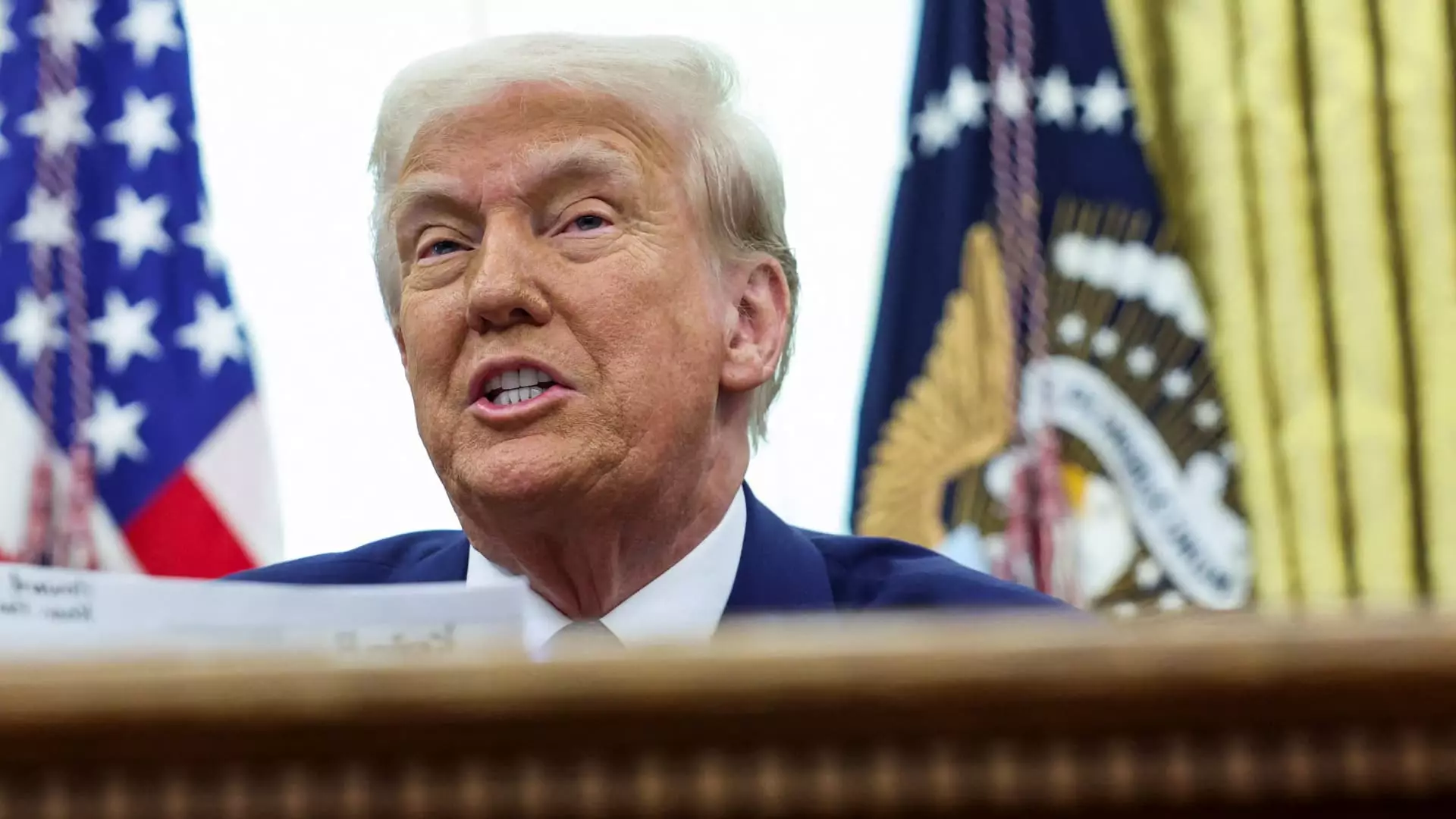In recent days, the U.S. defense sector has found itself in a state of turmoil following President Donald Trump’s surprising remarks regarding potential cuts to military spending. His suggestion that the nation could slash defense budgets by as much as fifty percent has sent ripples through the stock market, particularly affecting major defense contractors such as Lockheed Martin, Northrop Grumman, and General Dynamics. This stark comment, made in the context of a possible discussion on defense expenditure with major global players like China and Russia, raises many questions about the future of U.S. military funding and its broader implications.
Stocks within the defense sector abruptly declined in response to Trump’s statements. Lockheed Martin experienced a 1.5% decrease in share value, while Northrop Grumman and General Dynamics fell by an alarming 2.6%. Such rapid fluctuations are indicative of how sensitive the defense market is to political discourse. Investors typically rely on a stable defense budget for their projections of growth and profitability. Thus, any indication of potential cuts can lead to immediate sell-offs, as stakeholders reassess their expectations for these companies’ future revenue streams.
Throughout his political career, Trump has conveyed a contradictory stance regarding military spending. While he expresses the necessity of a robust military, which he supports with initiatives like an executive order aimed at creating an “Iron Dome of America” defense system, he also shows a willingness to consider drastic budget cuts. This duality can create confusion not only among policymakers but also among defense contractors and investors. TD Cowen policy analyst Roman Schweizer aptly pointed out that these mixed signals contribute to a pervasive sense of unpredictability about the future of military funding in the U.S.
As Trump moves forward with his presidential campaign for 2024, the ongoing war in Ukraine and the resulting demand for American arms provide an additional layer of complexity to the situation. The U.S. has committed considerable resources to assist allies in this conflict, yet the focus on reducing expenses could undermine those efforts. Investors will be watching carefully to see how Trump reconciles these competing interests—namely, the need for military readiness and deficit reduction.
The simultaneous push for efficiency, which includes collaborating with technology leaders such as Elon Musk, indicates a desire to find savings without compromising defense capabilities. However, finding the right balance may prove to be a Herculean task. Stakeholders must remain vigilant as they navigate through this landscape, characterized by sharp pivots in policy and emerging strategic dilemmas.
The future of U.S. defense spending appears fraught with uncertainty as President Trump continues to offer mixed messages. Investors and policymakers alike are assembled at a crossroads, where the decisions made today could significantly shape the trajectory of the defense industry for years to come. A clear and consistent strategy is essential not only for the stability of defense stocks but also for national security as the global landscape continues to evolve.

